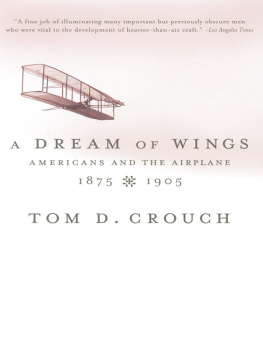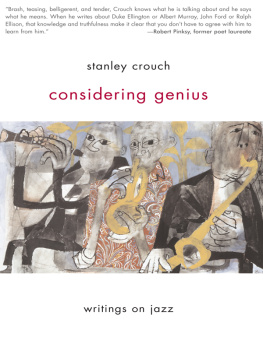Crouch - Litchfield Park
Here you can read online Crouch - Litchfield Park full text of the book (entire story) in english for free. Download pdf and epub, get meaning, cover and reviews about this ebook. City: Litchfield Park (Ariz.);Arizona;Litchfield Park, year: 2013;2014, publisher: Arcadia Publishing, genre: Home and family. Description of the work, (preface) as well as reviews are available. Best literature library LitArk.com created for fans of good reading and offers a wide selection of genres:
Romance novel
Science fiction
Adventure
Detective
Science
History
Home and family
Prose
Art
Politics
Computer
Non-fiction
Religion
Business
Children
Humor
Choose a favorite category and find really read worthwhile books. Enjoy immersion in the world of imagination, feel the emotions of the characters or learn something new for yourself, make an fascinating discovery.

- Book:Litchfield Park
- Author:
- Publisher:Arcadia Publishing
- Genre:
- Year:2013;2014
- City:Litchfield Park (Ariz.);Arizona;Litchfield Park
- Rating:5 / 5
- Favourites:Add to favourites
- Your mark:
- 100
- 1
- 2
- 3
- 4
- 5
Litchfield Park: summary, description and annotation
We offer to read an annotation, description, summary or preface (depends on what the author of the book "Litchfield Park" wrote himself). If you haven't found the necessary information about the book — write in the comments, we will try to find it.
Crouch: author's other books
Who wrote Litchfield Park? Find out the surname, the name of the author of the book and a list of all author's works by series.
Litchfield Park — read online for free the complete book (whole text) full work
Below is the text of the book, divided by pages. System saving the place of the last page read, allows you to conveniently read the book "Litchfield Park" online for free, without having to search again every time where you left off. Put a bookmark, and you can go to the page where you finished reading at any time.
Font size:
Interval:
Bookmark:

IMAGES
of America
LITCHFIELD PARK

Paul Weeks Litchfield is pictured here in his 30s. He joined Goodyear Tire & Rubber Company in 1900 and during his career was awarded many patents for tires. In 1916, he came to Arizona to plant cotton that was required for the cord of his newest tire patent. With the invention of the pneumatic tire, farm equipment would soon be rolling on rubber. (Courtesy of Goodyear Tire & Rubber Company.)
ON THE COVER: Paul Litchfield sits on a tractor with pneumatic tires. This c. 1938 photograph shows the replacement of the old steel wheel with a new pneumatic rubber tire patented by Litchfield. (Courtesy of Goodyear Tire & Rubber Company.)
IMAGES
of America
LITCHFIELD PARK
Celeste S. Crouch

Copyright 2013 by Celeste S. Crouch
ISBN 978-1-4671-3044-8
Ebook ISBN 9781439642405
Published by Arcadia Publishing
Charleston, South Carolina
Library of Congress Control Number: 2013933332
For all general information, please contact Arcadia Publishing:
Telephone 843-853-2070
Fax 843-853-0044
E-mail
For customer service and orders:
Toll-Free 1-888-313-2665
Visit us on the Internet at www.arcadiapublishing.com
To Paul Litchfield and the early pioneers from Goodyear Tire & Rubber Company, who had the vision to turn the barren desert into an oasis
CONTENTS
A special thank you to the many people who generously gave of their time to help with this book. Local family members of early Goodyear farm employees were very helpful in identifying people and places from past years.
Dr. Robert (Bob) McMillan, Carl Clarino, Belen Moreno, Linda Lamm, and Margaret McMicken Bartol were very supportive contributors. Julia Sweeney, Sara Homan, Barbara Dienes, Tim Barrow, Michael Levine, Frances Martin, and Edna Pascaletti were helpful with pictures and historical research. A special thanks to Michael Jordan for his photography and support.
Thank you to Meredeth Stucky and Judy Cook for their support and especially to Charlotte Cohen for her expertise and assistance in completing the final phases of the book. Special thanks to my husband, Jeff, and daughter, Sherry, for their assistance.
Thank you to the City of Litchfield Park, Arizona State University, Litchfield Park Historical Society, Luke Air Force Base History Department, SunCor, the Tom Doyle family, Steve Hoza, Libby Hilton Rouse, and local families who contributed pictures and historical information.
Unless otherwise noted, all images are property of the Goodyear Tire & Rubber Company and are from the Goodyear Collection stored at the University of Akron Archives in Akron, Ohio. All other photographs will be cited following the captions.
In an effort to continue Paul Litchfields legacy, author royalties from the Litchfield Park book have been designated to the City of Litchfield Park for the restoration of the Litchfields family home, called Rancho La Loma Homestead.
It is believed the Hohokam people reached the Salt River Valley around 700 AD. The Hohokam culture was rich and highly advanced. They masterminded an advanced system of irrigation, including many miles of canals. Some of their canals were still visible to the Spanish missionaries and explorers of the 16th and 17th centuries and formed the basis for the modern irrigation systems in Arizona. Some of the canals extended out from the west bank of the Agua Fria River towards present-day Litchfield Park.
Settlers came and went across this region, yet at the opening of the 20th century, no permanent settlement had been made on the land that includes Litchfield Park. The reason seemed to be the difficulty in irrigating the land, which was several miles from the source of water.
The first attempt to develop the land west of the Agua Fria River was by an organized group of settlers who were interested in obtaining cheap land. William G. Kriegbaum, a citrus grower from Riverside, California, first came to Arizona in 1908, looking for a climate suitable to grow citrus. He soon recruited another 21 settlers from California to come in 1910 to establish the Air Line Water Company and to file desert claims on the land.
Under Statute 377, passed by the US Congress in 1877, each person could claim 320 acres of desert land if he or she could supply water. Kriegbaum and his wife together claimed 640 acres, and each of the settlers from California laid claim to land. The challenge was to find a way of diverting water from the Agua Fria River, which was located miles to the east, for irrigation. Each group dug lateral canals to make water available to its tract. Water rights were established by the Air Line Water Company in 1910. As development increased, the water demand also increased, and several wells were dug to supplement the canals. The settlers started to clear the desert by dragging railroad ties, pulled by mules, over the land.
In 1911, Kriegbaums son Lawrence arrived to assist his father in developing the area. They lived in a tent, and after clearing land, they built a small frame house. This was the first building on the present site of Litchfield Park. Soon after the house was completed, a tornado blew it away. They made adobe bricks and built a six-room adobe house. There were no roads, and the nearest store was Billy Moores store on Buckeye Road, approximately six miles away. They received mail at this store in a mailbag that was delivered by stagecoach from Phoenix, 20 miles away. The Kriegbaums laid out roads that were scarcely more than trails. Buckeye Road was the only road into Phoenix. Transportation improved when the Arizona Eastern Railroad was built across the Agua Fria River from Phoenix. Eventually, around 5,000 acres of desert land was developed in the Litchfield Park area by the Kriegbaums and other settlers.
World War I and the German U-boats had cut off the supply of cotton from Egypt and other Mediterranean countries. The Goodyear Tire & Rubber Company needed this supply of cotton for its pneumatic tires. The supply of cotton in the Southeastern states was destroyed by an infestation of boll weevils. The US Department of Agriculture had succeeded in growing Pima cotton in the Southwestern states, where the climatic conditions were similar to those in Egypt. This knowledge brought the Goodyear Tire & Rubber Company to the Salt River Valley to grow long staple cotton needed for its tires.
Paul Weeks Litchfield of the Goodyear Tire & Rubber Company came to this area in 1916 and helped to establish the Southwest Cotton Company, a new subsidiary to handle the cotton-growing project. He approached the Kriegbaums and other settlers to purchase their land for approximately $25 an acre. That year, Goodyear Tire & Rubber Company acquired 16,000 acres along the Agua Fria River (called Litchfield Ranch) and 8,000 acres in Chandler (called Goodyear Ranch). By 1921, the Southwest Cotton Company also purchased land in present-day Sun City (called Marinette Ranch), totaling 38,000 acres of property with 20,000 acres cultivated.
To establish the Litchfield Ranch, a small camp called Algodon (meaning cotton) was set up one mile east of the present site of Litchfield Park. Temporary buildings were erected there until the Kriegbaums adobe home was purchased and used for the Litchfield Ranch headquarters. In the fall of 1917, the company moved the Algodon camp to the present site of Litchfield Park, and new buildings were added to facilitate farming activities. This was the beginning of what is now Litchfield Park.
Next pageFont size:
Interval:
Bookmark:
Similar books «Litchfield Park»
Look at similar books to Litchfield Park. We have selected literature similar in name and meaning in the hope of providing readers with more options to find new, interesting, not yet read works.
Discussion, reviews of the book Litchfield Park and just readers' own opinions. Leave your comments, write what you think about the work, its meaning or the main characters. Specify what exactly you liked and what you didn't like, and why you think so.













